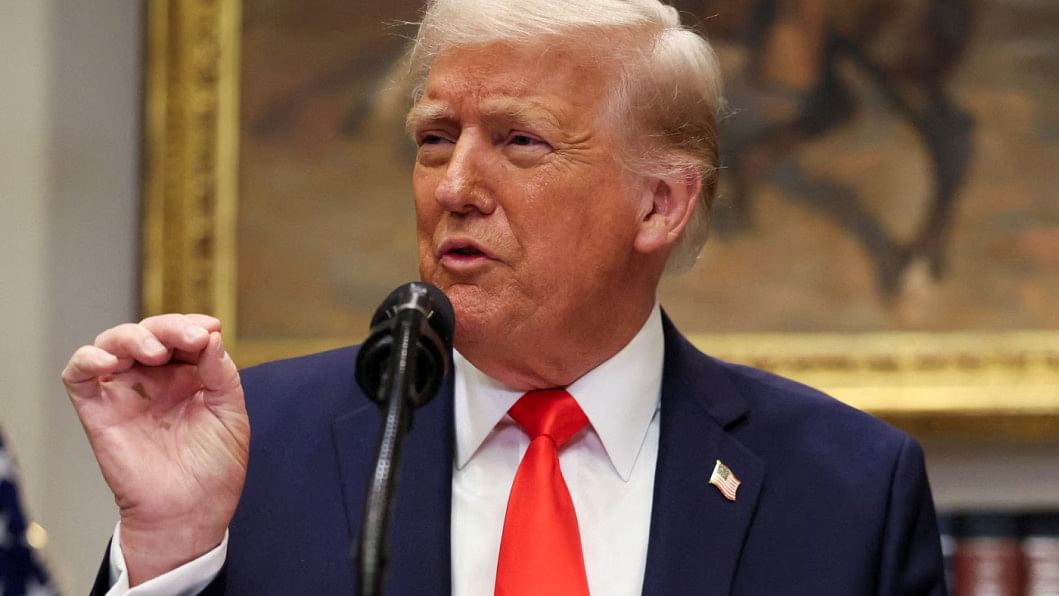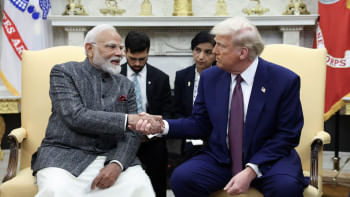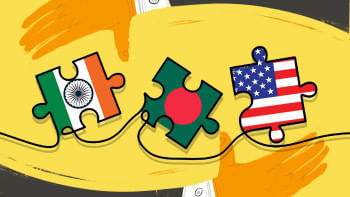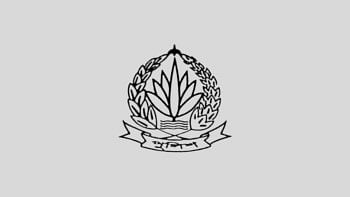How Trump's second term may reshape US-India ties

As President Donald Trump re-enters the White House for a second term, questions loom over the future of US-India relations which faces new complexities. Following Trump's recent remarks during a joint press conference with Indian Prime Minister Narendra Modi, it is clear that the US is recalibrating its approach to India, particularly in the realms of trade, defense, and energy. Under Trump 2.0, India finds itself at a crossroads, navigating a more assertive and transactional US stance, with the potential for both opportunities and challenges ahead.
Reciprocal policies on the horizon
One of the most prominent themes emerging from Trump's second term is his hardline stance on trade. In his recent comments, Trump referred to India as "one of the highest tariffed nations anywhere in the world," signalling growing dissatisfaction with India's tariff policies. Trump bluntly warned that the US would no longer tolerate what he sees as one-sided tariffs, pushing for what he termed "reciprocal tariffs." "Whatever India charges, we charge them," Trump stated, indicating that the US would impose similar tariffs on Indian goods entering the US if India continues with high tariff practices.
This move is likely to put significant pressure on India, already under strain from previous trade negotiations. India has historically defended its tariff policies as essential for protecting domestic industries, especially in the agriculture and manufacturing sectors. However, with Trump's new approach, India may now face retaliatory US tariffs on its exports unless substantial concessions are made. This could fundamentally alter the trade dynamics between the two countries, especially considering the economic significance of the US as India's largest trade partner.
In 2024, US-India total goods trade was valued at approximately $129.2 billion, with US exports to India reaching $41.8 billion and imports from India at $87.4 billion. A shift to reciprocal tariffs could disrupt these key trade flows, affecting a wide range of industries such as technology, agriculture, and pharmaceuticals. Indian exporters would face challenges in the face of increased tariffs on items such as textiles, gems, and machinery. For the US, a continued trade imbalance with India may fuel further tensions, as Trump is determined to address what he perceives as unfair trade practices.
A new energy order?
The energy sector is another key area where the US and India have signalled a deepening partnership. During a recent joint press conference, President Trump highlighted an agreement that positions the US to become India's leading supplier of oil and gas.
The deal goes beyond oil and gas, extending into the nuclear energy sector. Trump made a bold declaration that the US would become "the number-one supplier in the groundbreaking development for the US nuclear industry." This is a significant pivot in US-India relations, as India is currently reforming its laws to welcome US nuclear technology. These changes will pave the way for US firms to enter India's nuclear market, offering advanced technology and expertise that could help meet India's massive energy demands.
For India, this agreement marks a significant shift, particularly in its energy procurement strategy. While India has traditionally relied on oil imports from countries like Iran and Russia, a pivot towards US energy supplies could eventually become costlier for India. Furthermore, this growing alignment with US energy interests will also require India to navigate the delicate balance of maintaining its long-standing relationships with other energy suppliers, notably Russia.
A strategic partnership amidst growing tensions
Defence cooperation has been one of the most significant pillars of the US-India relationship, and Trump's latest comments suggest that this partnership is set to deepen even further. The "US-India COMPACT" (Catalyzing Opportunities for Military Partnership, Accelerated Commerce and Technology for the 21st Century) sets the outline of a comprehensive initiative designed to transform defence, trade, and technology relations between the two countries. Trump made it clear that the US intends to significantly ramp up military sales to India, "Starting this year, we'll be increasing military sales to India by many billions of dollars," a statement that underscores the growing importance of the defence partnership in US-India relations.
A key component of this expanded defence cooperation is the potential sale of the F-35 stealth fighter jet to India. Trump confirmed, "We're also paving the way to ultimately provide India with the F-35 stealth fighters." The F-35, among the most advanced and stealthiest fighter jets in the world, would represent a significant leap in India's defense capabilities. While India has not yet finalised the purchase, the prospect of acquiring such cutting-edge technology underscores the increasingly close strategic alignment between the two countries.
However, this growing defense partnership is not without its complications. India has long maintained strong defence ties with Russia, a legacy that still influences its military procurement decisions. A shift to acquiring the F-35 could place India in a delicate position, balancing its historical relationship with Russia against its growing ties with the US. The potential for military dependence on the US raises concerns over India's strategic autonomy, particularly in the context of regional power dynamics involving China.
Moreover, India faces the risk of the F-35 becoming a "white elephant" if it cannot effectively integrate and operate the technology. The complex logistics, training, and maintenance requirements of the F-35 could further strain India's military resources.
Will India adapt or resist?
Trump's policies, ranging from trade tariffs to defense cooperation, signal a shift towards a more transactional and assertive relationship between the two countries. The US may indeed be tightening its grip on India under Trump 2.0, but the question remains: how will India respond? Will it acquiesce to the demands of its powerful partner, or will it find ways to assert its own interests in the face of increasing US pressure? For now, it seems that India may be inclined to comply with US demands, at least in the short term.
Makshudul Alom Mokul Mondal is a public policy and advocacy specialist, currently working at the Ministry of Commerce.
Views expressed in this article are the author's own.
Follow The Daily Star Opinion on Facebook for the latest opinions, commentaries and analyses by experts and professionals. To contribute your article or letter to The Daily Star Opinion, see our guidelines for submission.


 For all latest news, follow The Daily Star's Google News channel.
For all latest news, follow The Daily Star's Google News channel. 





Comments